NASA
There is a (small) revolution underway in space.
Rocket science dictates that the cost of sending something into space is proportional to its size and weight. The smaller and lighter you can make something, the cheaper the uphill ticket will be.
At the same time, modern microelectronics, the kind you find in your average smartphone (or on this very website), are increasingly allowing devices to be built that are smaller, smarter, cheaper, and use less power.
The combination of these trends has led to a revolution in spacecraft design. Ten-centimeter "CubeSats", first proposed for student missions by Jordi Puig-Suari of Cal Poly and Bob Twiggs of Stanford, have become an industry standard with a rich and growing ecosystem. Today anyone with a sufficient bank account can buy off-the-shelf CubeSat hardware (and even launch services) from a number of vendors. The advantages are obvious: just as we've seen with Arduino, life is much easier if you don't have to reinvent the wheel each time you start a project. And like Arduino, the small spacecraft field is evolving at a breakneck pace.
With this in mind, we recently attended two unique spacecraft design conferences, to see what the people on the cutting edge have been dreaming up.
Outward Bound
Back in April we attended the Interplanetary Small Satellite Conference at the Caltech campus in Pasadena CA. This small conference (less than 100 people) is only in its 2nd year, which illustrates how new (and audacious) the idea of small spacecraft in deep space really is.
Small comes with its own set of thorny engineering problems, which are exacerbated the further out you go. But the more down-to-earth reality of shrinking budgets and cancelled programs have made the space science community realize that it's either go small, or not at all. "Flat (budgets) is the new up" says NASA Ames' Matt Sorgenfrei. "Nobody is doing billion dollar missions. It's time for this community to grow up."
Many of these engineering problems are related to aperture, or the surface area you have available to transmit or receive energy. For many of the subsystems on a spacecraft, aperture is everything. You want your antennas, solar panels, science instruments, etc. to have as much active area as possible. The larger the area, the more energy you can gather, transmit, or detect with your instruments. Unfortunately, surface area is in very short supply on a small spacecraft.
And design margins that are perfectly adequate for low earth orbit can be mission-ending in deep space. For example, in order to establish a reliable communications link, you need enough transmit power and antenna gain in both directions to pull your data out of the noise. Distance is one of the factors in this equation; the further away you go, you'll need some combination of more power, higher antenna gain, or lower bit rates to close the link. We can still talk to the Voyager spacecraft, currently almost 20 billion km away, because we can make up for it on the ground side with the monstrous Deep Space Network (DSN) antennas. But few people have access to this resource; there's never a 70m dish around when you need one.
M. Ravichandran et.al., ASU
But engineers love a good challenge and this community is no exception. One solution to the aperture problem involves clever mechanisms that inflate or unfold like origami, effectively turning a small spacecraft into a larger one. Other solutions involve exotic communication systems such as lasers. But an even more fascinating approach is to fundamentally rethink mission design in terms of constellations of multiple small spacecraft, all serving as sparse elements in a huge virtual aperture. All of these topics and more were discussed at the conference.
It's not all talk. As noted above, NASA and others have seen the writing on the wall, and are retooling their design centers to support small spacecraft. NASA Ames, who have recently been building CubeSats out of smartphones, is managing a trio of deep space missions based on a 6U CubeSat chassis. (The basic 10cm CubeSat unit is known as "1U". This unit can be multiplied in any dimension to create larger spacecraft. The 6U (2U x 3U) spacecraft used in these missios is about the size of a briefcase.) All three spacecraft will piggyback on the first flight of the new Space Launch System in late 2017. The EM-1 mission will send an unmanned Orion space capsule around the moon and back to Earth; at some point between the Earth and the Moon the three spacecraft will be deployed and proceed on their own.
P. Banazadeh et.al., NASA Ames
The three spacecraft have very different missions, but are based on common hardware which cuts development costs immensely. "Lunar Flashlight" will deploy an 80m2 solar sail, use the sail to maneuver itself into polar orbit around the moon, and will then slew the sail like a mirror to reflect sunlight into deep polar craters that are in permanent darkness. It is believed that these craters hold a significant amount of water ice, deposited by passing comets over billions of years. The reflected sunlight will be analyzed by onboard instruments to see what's down there. The second mission, "NEA Scout", will also deploy a solar sail. It will use it to slingshot past the moon, and attempt to rendezvous with a near-earth asteroid (NEA). The final mission, "BioSentinel", will also fly by the moon, and perform long-term testing of biological samples in the high radiation of deep space. This information will be valuable to researchers planning to send humans to Mars.
Size comparison: 80m 2 solar sail, Soyuz spacecraft, human. Note the 6U spacecraft in the lower right corner. (P. Banazadeh et.al., NASA Ames)
Other research presented at the conference covered a multitude of subjects, including engines and ferries that could be used to get spacecraft from here to there, and interesting science targets such as Mars's former-asteroid moon Phobos, and Saturn's largest moon Titan (which apparently has an atmosphere so thick that an aircraft could stay aloft using 2% of the energy required on Earth). Suffice it to say that even without more billion-dollar missions (for uncrewed spacecraft at least), small spacecraft, imaginative mission design, and clever engineering should bring us fascinating results for years to come.
Small gets Smaller
The second event we attended was Kentucky Space's "PocketQube" Workshop, held in May in Cape Canaveral Florida (as well as a few other locations around the country).
PocketQube is a new standard for extremely small spacecraft, developed by Professor Bob Twiggs (now at Morehead State University), one of the people behind the original CubeSat. Where a CubeSat is 10cm on a side, PocketQubes are only 5cm on a side - 1/8 the volume of a CubeSat. The PocketQube standard was developed to even further reduce mission cost - an unsubsidized CubeSat mission can easily exceed $100k, but a PocketQube can be built and launched for about $35k. This still isn't cheap, but it's getting closer to what an ambitious school or other group could afford or Kickstart.
Professor Bob Twiggs
Several PocketQubes have been built and launched and are successfully operating on-orbit. One of these is provocatively called "$50SAT", which isn't far off. It was developed by three amateur radio enthusiasts with little spacecraft experience: Howie DeFelice AB2S, Michael Kirkhart KD8QBA, and Stuart Robinson GW7HPW. All of the flight hardware used in $50SAT, except for the solar cells, is off-the-shelf (some of it from SparkFun). The flight computer is a PICAXE 40X2, the flight radio is an RFM22, and the battery is an off-the-shelf cylindrical LiPo cell. The extremely clever flight software, entirely written in PICAXE BASIC, manages to trick the RFM22 into radio modes it was never designed for, such as FM morse, FSK RTTY, and native RFM22 packets. Radio amateurs can receive telemetry from the satellite as it passes overhead, and even talk to it if they assemble the right equipment. What's most gratifying is that the designers have released all of the software and hardware to the public at 50dollarsat.info. Go Open Source!
Fifty Dollar Sat project
Since they are even more aperture-constrained than their larger cousins, it may seem impossible to do anything "useful" with something about the size of a tennis ball. For educational purposes this isn't a problem, as students working on the design, construction, launch and operation of a satellite IS the mission. But since PocketQube makes it more practical than ever to send up constellations of tiny satellites, with a bit of imagination the platform may enable some really neat distributed science. The small size also naturally limits complexity, which leads to better reliability. Or as Professor Twiggs puts it, "It is better to have a working Sputnik than a failed Hubble."
Both of these conferences put together had less than a hundred people, which was part of the fun. Later this summer, SparkFun will again have a booth at the much larger AIAA Small Satellite conference. If you're there, please stop by and say hi to myself, "According to" Pete Dokter, and Jeff "Richard" Branson. We're still not planning on putting specific satellite hardware on our storefront (yet). But as $50SAT demonstrates, with some off the shelf parts and careful engineering, the sky is no longer the limit.
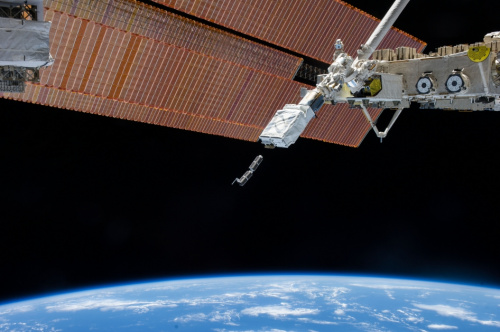
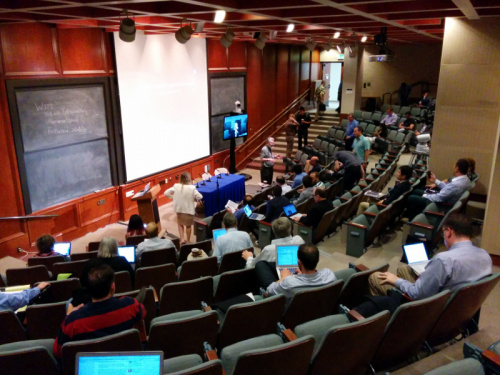



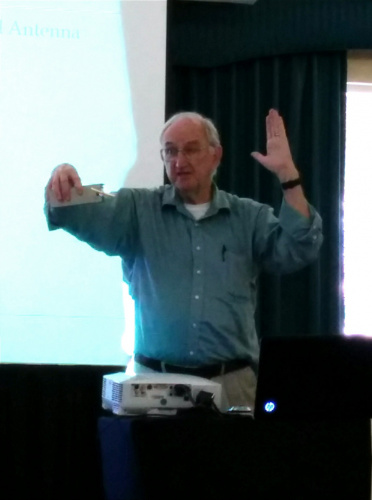
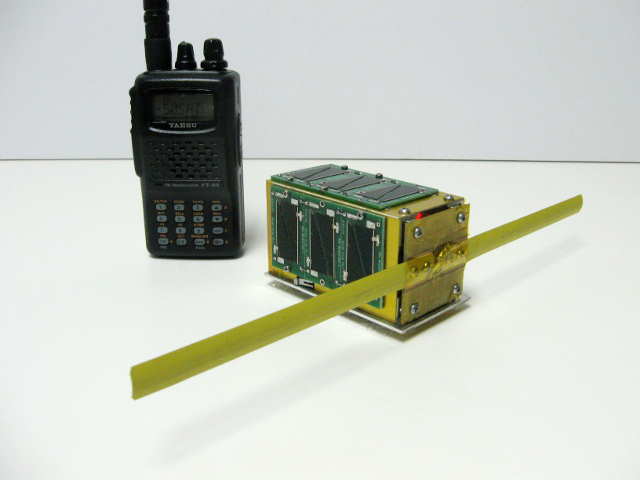
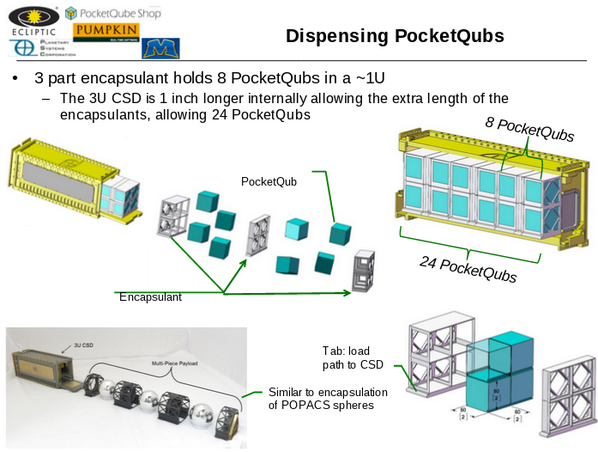






This market is changing very rapidly. Even a few years ago, any launch was such a rare and expensive opportunity that you would only use the most highly-qualified (and expensive) parts, which SparkFun really isn't equipped to provide (we've got DOGS on our production floor, and kind of like it that way). But we are continuously reevaluating that stance, and now that people are actually using our stuff as flight hardware, you may see some interesting items in the new product posts yet.
I love the dogs on your production floor! And since dogs and space travel have a long and storied history, I think having them on the production floor would only improve the fledgling Sparkfun in Spaaaaaaaaace!!!!!!!
Aw man...that would be awesome.
Great Post Mike! Thanks for the shout out to PocketQube Shop :) For those looking for off the shelf parts for their first satellites, we have the largest selection PocketQube parts around so feel free to drop me a line if we can help www.pocketqubeshop.com
Mike
Thanks for the great article. It is always cool to see one of your own projects promenently displayed in someone else's blog post, news article, etc.
My name is Michael Kirkhart (KD8QBA), and I am one of the $50SAT/MO-76/Eagle-2 developers as well as a SparkFun customer. I hope you enjoyed Howie's talk at the PocketQube workshop. It has since been posted on YouTube, courtesy of Gustavo (links at http://www.diysatellite.com/workshop.html). Howie did an excellent job giving a 30 minute summary of the planning, design, and in-orbit performance of $50SAT, and I invite all who are interested to watch the video.
$50SAT has been in orbit for 7 months and is still operational. The battery is showing signs of aging, but it is still holding enough of a charge to keep the satellite running when solar power is not available. While the depth of discharge is fairly low (22 mA-hr on a 700 mA-hr battery), it does see temperature swings from 26 degrees C to -29 degrees C every orbit, and has completed 3244 orbits as of this writing.
I wanted to point out you do not need an amateur radio license to receive the downlink signal, and we (Stuart, Howie, and I) encourage all of you who can to monitor the transmissions from $50SAT/MO-76/Eagle-2. If you ever intend on building your own satellite, having tracking/monitoring experience will be extremely helpful. We even offer full color reception report cards (QSL cards in ham talk) for valid reception reports. On our WWW site (http://www.50dollarsat.info), we have links to our Dropbox, which contains (amoung other interesting things) a document describing the communication link. We also have a link to our Yahoo discussion group, where you can post your questions, comments, and hopefully, your reception reports and captured telemetry.
If you do have an amateur radio license, no one has completed the $50SAT uplink challenge. Details can be found at the following URL:
http://amsat-uk.org/2014/02/21/50sat-amateur-radio-challenge/
73
Michael Kirkhart KD8QBA $50SAT/MO-76 team
More info about pocketqube workshop and pocket satellite at http://www.diysatellite.com/workshop.html
Wow, the “$50SAT” really has my imagination going. In 10 years, I bet hobbyists will start putting "equipment" into space. Just having a piece of hardware in orbit and to be able to communicate with it for getting common readings would be mind blowing. These common sensors could be temp, radiation, even searching the radio spectrum for little aliens! Add in a camera or even video and I would be in heaven. Ok, now I am going to start brain storming..
I would highly agree with putting some 'spacecraft' parts up for sale. Nothing fancy, just something to give hobbyists a good start.
Great post Mike!
When I was working at MIT I had a chance to chat with Sara Seager about her interplanetary cubesat ideas. Comm is definitely one of the biggest issues, but I'm also not sure what's going to push a cubesat to Mars...
Thanks! I wish I had the space to discuss everything that was presented at the conference. For getting out there, people are building low-thrust but high-efficiency electric propulsion units that you could use to slowly spiral out from the earth and go anywhere your fuel supply will take you. There was also serious consideration given to putting CubeSat deployment cartridges onto future Mars missions, or even providing specific ferry launches dedicated to putting gaggles of small spacecraft in lunar or martian vicinity. Take a look a the IPSSC 2013 and 2014 presentations (hopefully they'll make the 2014 proceedings available at some point).
Mike,
Excellent post! I just wanted to offer a quick clarification: Although all three mission concepts (BioSentinel, NEA Scout, and Lunar Flashlight) are working closely together, BioSentinel is being developed at NASA Ames, while Lunar Flashlight and NEA Scout are collaborations between JPL and Marshall Space Flight Center. The charts credited to "Banazadeh et.al." in fact came from JPL, not Ames, though Matt Sorgenfrei is indeed at NASA Ames. All of us are looking forward to seeing CubeSats go to the next level. :)
It's amazing that 2 days after Google bought Skybox for $1/2 billion, their product is already obsolete. New satellites are 1/2 the size & map the moon.
I always wanted to build one of those micro satellites, but it just costs too dang much.
The $50SAT developers have shown that the hardware itself doesn't have to be expensive. It's the ride up there that kills you. NASA does provide free flight opportunities through the ELANA program, but you need to be associated with a non-profit or educational group, have a really good case for flying, and follow the same formal application and selection process that larger space missions do.
But the free flight opportunities only apply to people/groups who have a legitemate reason to launch one. If I tried to apply for a free flight with the reason of 'because I could' I would probably be blacklisted from space.
The hardware is not a problem, as I'd no doubt just built it myself from scratch, but the launch is the killer, It'd be pretty cool if you could secure a ride on a Falcon 9 for under $10,000 though.
I wonder about launching a weather balloon to the stratosphere, (maybe David Stillman could lend some expertise,) and then doing a secondary launch from there. I know there are about a thousand obstacles and variables with that, but getting the first 50,000 feet out of the way without propulsion would be a decent start.
Rockoons have been around for a long time, and as Dave says several amateur groups are still working on schemes to use them to get to orbit. Unfortunately the math doesn't show a significant advantage (less than 5%) for launching an orbital payload from 100k' over doing it from the ground, especially given the considerable engineering challenges in building and flying a balloon that large. (That's for rocket technology; mass drivers may be a different story since all the acceleration takes place in the barrel, and exiting straight into near vacuum makes a lot of sense.)
The main issue is that the majority of the energy required to put something into orbit is of the horizontal, not vertical variety (you have to not only get it out of the atmosphere, but fling it all the way around the earth). For example, SpaceShipTwo is designed to go vertically into space for five-minute tourist flights (and starts from 50k'). Turns out it would take a rocket 600 times larger than the one they have now for it to achieve orbit. Starting from 1/4 of the way there vertically does help, but is only a small part of what needs to happen.
But despite the physics, never let it be said that I'm against combining rockets and balloons, that sounds like a fun time.
Rocket guy to the rescue! Thanks, Mike :)
I'm the balloon guy, not the rocket guy!
That said, google up on rockoons. They are totally rad and amateur ballooners have been exploring this option for a few years now. The commercial company JP Aerospace has had the most promising launches that I've seen (though it was a couple years ago) out in the desert of California, but there are other groups making headway as well. There are a ton of technical hurdles to overcome, but who doesn't love a good challenge? :)
Thanks David! I remember you being the balloon guy from Nate's article a few years back regarding his ~~failed~~ very educational HAB launch. I figured that people with as much curiosity but more time and money than I had tried the rocket-from-balloon idea, but wasn't aware that they were called rockoons. Thanks so much!